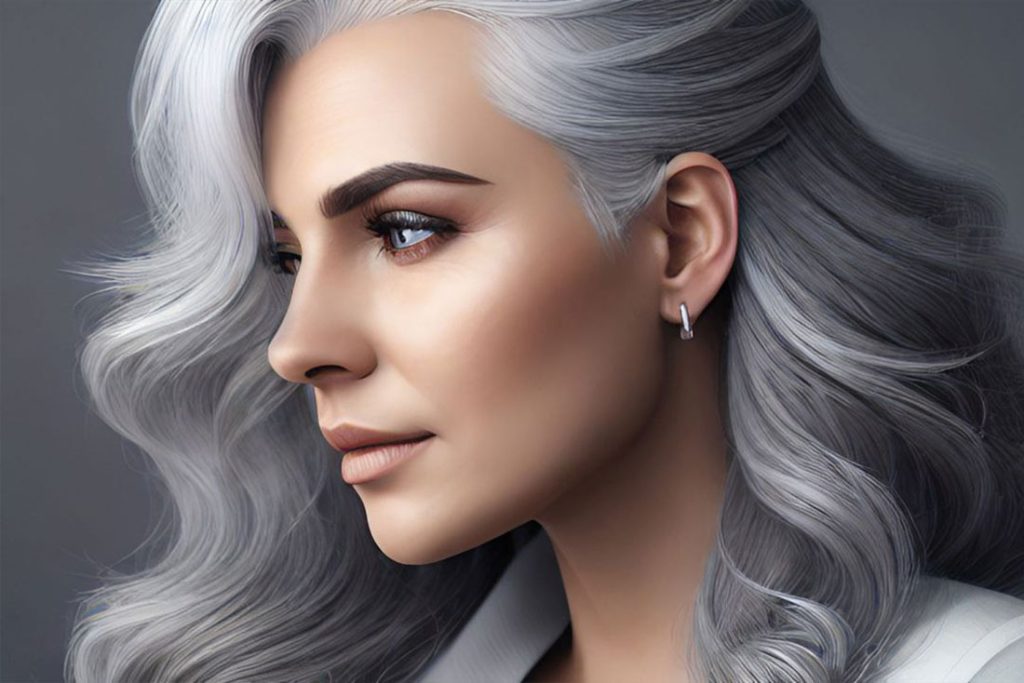The Science and Significance of Canities: A Cosmetologist’s Comprehensive Guide
Canities, commonly known as gray or white hair, is often considered a hallmark of aging, but there’s more to it than meets the eye. It’s a subject that’s not only scientifically fascinating but also emotionally charged for many individuals. As cosmetologists, understanding the ins and outs of canities can equip us to offer informed advice and effective solutions to our clients. This article aims to explore what canities is, its types, and how cosmetologists can address it professionally and empathetically.

Understanding Canities
What is Canities?
Canities is the depigmentation of hair, causing it to turn gray or white. Contrary to common misconception, gray hair is not a different type of hair but is actually pigmented hair that has lost its melanin. Melanin is the natural pigment responsible for the color of skin, hair, and eyes.
Types of Canities
Congenital Canities
- Characteristics: Present at birth, congenital canities is a rare condition that usually accompanies disorders like albinism.
- Albinism: In albinism, the individual is born with little to no melanin, affecting their skin, hair, and eyes.
Acquired Canities
- Characteristics: This type is associated with aging and can also be accelerated by factors like extreme stress or illness.
- Melanin Production: As we age, the hair follicles produce less melanin, causing the hair to lose its original color.
Cosmetological Interventions
Dyeing and Coloring
One of the most straightforward approaches to managing gray hair is through dyeing or coloring. Various products are designed to cover gray hair, and some can even simulate the natural highs and lows of human hair color. Always consider the client’s skin tone and original hair color when recommending dye.
Hair Care Products
There are specialized shampoos and conditioners designed to enhance the natural silver or gray in hair. These products often include purple or blue pigments to counteract any yellowing that may occur.
Scalp Treatments
While canities is not indicative of an unhealthy scalp, aging skin could benefit from nourishing scalp treatments. Moisturizing treatments can make the hair appear more vibrant, whether pigmented or depigmented.
Emotional and Psychological Aspects
Canities often comes with its share of emotional and psychological implications, including concerns about aging and beauty standards. As a cosmetologist, it’s vital to approach the topic sensitively and offer solutions that not only address the physical but also the emotional aspect.
Best Practices and Ethical Considerations
- Client Consultation: Always conduct a thorough consultation before any color treatment to understand the client’s needs and expectations.
- Informed Choices: Provide clients with a variety of choices, from embracing their gray to choosing a natural-looking dye.
- Ethical Products: Whenever possible, recommend products that are ethically sourced and free from harmful chemicals.
- Referrals: In the case of sudden or unusual graying, suggest that the client consults with healthcare providers for possible underlying issues.
Conclusion
Understanding canities from both a scientific and emotional standpoint enables cosmetologists to offer holistic care. Whether it’s through dyeing treatments, specialized hair care products, or simply a compassionate consultation, cosmetologists can make a significant impact on how clients experience and manage gray hair. With the right approach, we can help clients make informed choices, enhancing not just their appearance but also their well-being.






